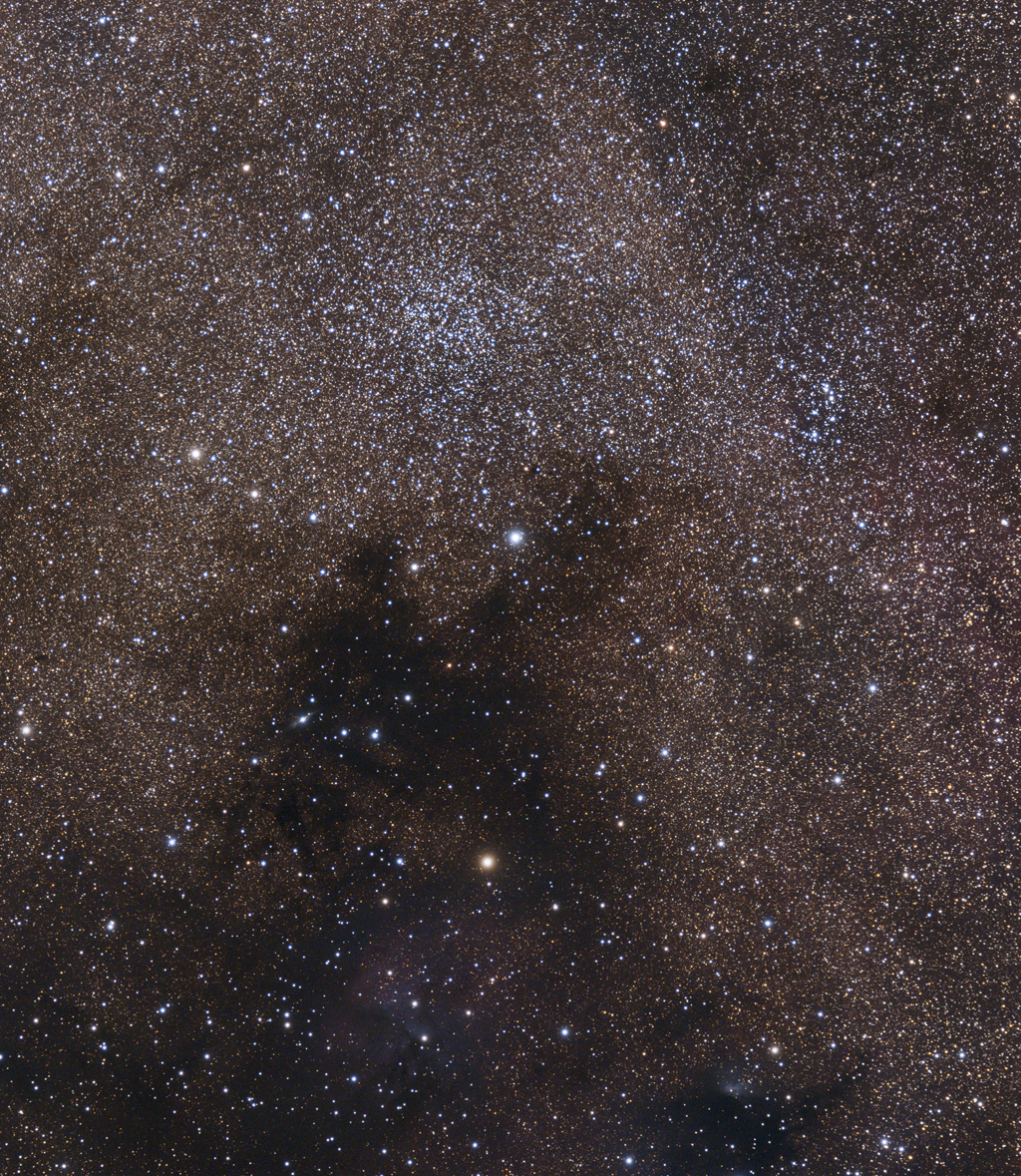 |
CHAMÄLEON + ONJALA OBSERVATORY DeepSky | SITEMAP HOME CHAMÄLEON |
|
 |
|||
| « zurück zur Startseite
Sternhaufen « back to home star cluster |
Großes Bild laden - load large image 2048 x 1400 Pixel Aufnahmedaten Image data |
NGC 6249 und NGC 6259 - Open star clusters in the constellation Vela - mosaic of 2 segments

NGC 6249 und NGC 6259 Unser Bild zeigt ein reiches Sternfeld mit den beiden offenen Sternhaufen NGC 6249 und NGC 6259 im Sternbild Skorpion. Die Sternhaufen liegen nördlich einer großen und dichten Dunkelwolke, in die Reflexionsnebel eingebettet sind.
NGC 6249 (rechts im Bild) hat deutlich weniger Sterne als NGC 6259, er enthält nur etwa 30 Sterne und wird nach Trumpler der Klasse II 1 p zugeordnet. Er ist etwa 3.200 Lichtjahre vom Sonnensystem entfernt. NGC 6249 wurde am 5. Juni 1826 von James Dunlop entdeckt.
NGC 6259 ist mit etwa 150 Sternen deutlich größer und erscheint auch konzentrierter als der kleinere nachtbar NGC 6249. Er wird nach Trumpler der Klasse III 2 m zugeordnet und ist mit einer Entfernung von etwa 3.300 Lichtjahren ähnlich weit vom Sonnensystem entfernt wie NGC 6249. Entdeckt wurde der Sternhaufen am 13. Mai 1826 von James Dunlop.
Direkt südlich der beiden Sternhaufen liegt eine sehr dichte und dunkle Staubwolke. Sie beinhaltet 2 Reflexionsnebel, GN 16.57.5 (links im Bild) und deutlich kleiner ist GN 16.54.9 erkennbar.
Object description
NGC 6249 und NGC 6259 Our image shows a rich star field with the two open star clusters NGC 6249 and NGC 6259 in the constellation Scorpio. The clusters are located north of a large and dense dark cloud in which reflection nebulae are embedded.
NGC 6249 (on the right of the image) has much less stars than NGC 6259, it contains only about 30 stars and is classified as class II 1 p according to Trumpler. It is about 3,200 light-years from the solar system. NGC 6249 was discovered by James Dunlop on June 5, 1826.
NGC 6259 is much larger with about 150 stars and also appears more concentrated than the smaller postbar NGC 6249. It is assigned to class III 2 m according to Trumpler and with a distance of about 3,300 light-years is similarly far away from the solar system as NGC 6249. The star cluster was discovered on May 13, 1826 by James Dunlop.
Directly south of the two clusters lies a very dense and dark dust cloud. It contains 2 reflection nebulae, GN 16.57.5 (left in the image) and much smaller GN 16.54.9 is visible. .
NGC 6249 und NGC 6259 - Open star clusters in the constellation Vela - mosaic of 2 segments
Image data
10.05.2022 - 18 x 600 s, ZWO ASI 071 Pro - Color (cooled)
Telescope: Astro Physics 130mm EDFS + Flattener at f = 850mm
Location: Chamäleon Observatory, Onjala Lodge, Namibia
Image acquisition and processing: DeepSkyStacker, PixInsight + Photoshop
 |
 |
 |
 |
 |
 |
 |
| Sonne | Mond | Sonnensystem | DeepSky | Weitwinkel | Verschiedenes | Spez. Projekte |